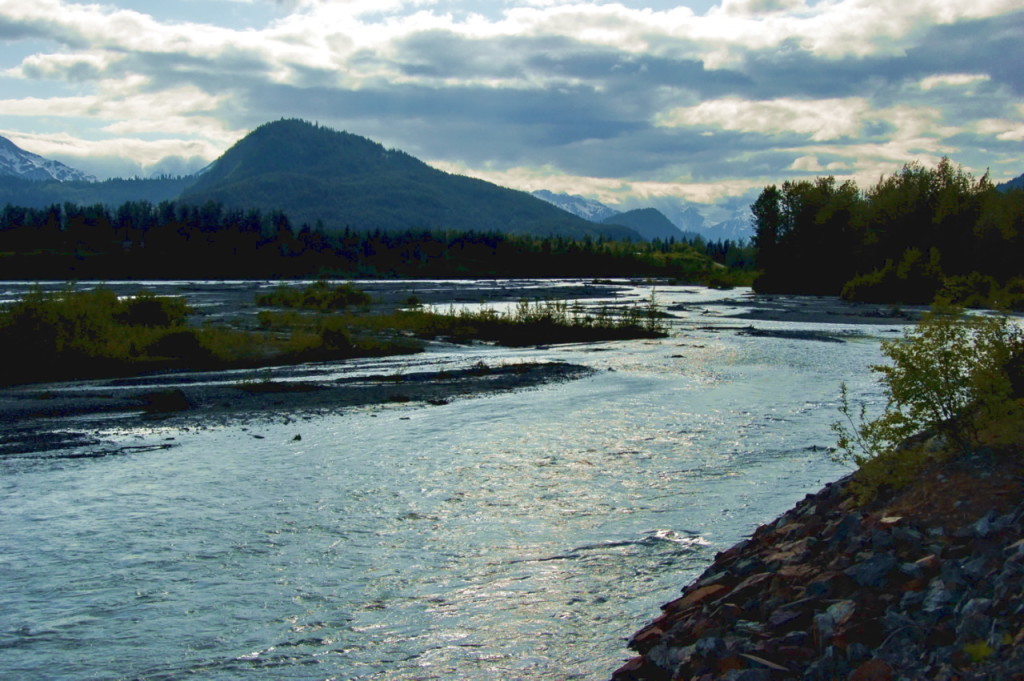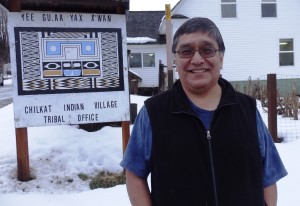The Chilkat Indian Village in Klukwan is trying to preserve its main salmon resource – the Chilkat River — with the highest environmental protection available.

If the river is named an Outstanding National Resource Water, it would be protected from activities that degrade water quality. But there is no system in place in Alaska to evaluate this kind of water protection request. That could change with a bill in the State Legislature that would place these types of decisions in the hands of lawmakers.
The Chilkat River borders Haines and Klukwan, extending 50 miles in Southeast Alaska and Canada. For generations, it’s provided salmon to the people in the Upper Lynn Canal.
“That’s like our Fred Meyer, our Safeway, stores like that. That’s where we get our food from,” said Chilkat Indian Village tribal council president Jones Hotch Jr.

“I believe this is like a shot across our bow. Like a warning to us, a signal that we should do something.”Hotch says this past summer was the worst subsistence harvest he’s seen.
That’s why the village nominated the river as an Outstanding National Resource Water. The purpose of the designation is to give waters of ‘exceptional recreational or ecological significance’ the highest protection under federal law.
But right now, the law is in limbo. The Federal Clean Water Act requires states to put a method in place to evaluate these water nominations. But Alaska hasn’t figured out a method yet. For years, the state Department of Environmental Conservation has worked toward regulations. They put out draft rules in 2014, but then decided to make revisions, which they are still developing.
“The consequences of this protection level are that the water quality must be maintained and protected, which means that there would not be any allowable discharges to the water unless it was deemed to temporary in nature,” said Earl Crapps, an environmental program manager with DEC.
In most Alaska waters, the state can allow activities that degrade water quality to a certain extent. With the Outstanding Resource status, also called a ‘tier 3 designation,’ no degradation is allowed, unless it is temporary and has limited impact.
Because of the strict limitations of that protection, some Haines residents are pushing back against the Chilkat River nomination.
“The economics of this town does not depend just on fish,” Gary Hess said at a local Fish and Game Advisory Council meeting in January.
Some at the meeting wondered how the water protection would impact mining, logging and other industries. Right now, Constantine Metal Resources is conducting exploration in the Chilkat Valley for a potential mine.
“The mine, that’s gonna be a big boom for Haines,” Hess said. “I don’t see any reason in the world that we have to go to the extreme limits of going to a tier 3.”
The tribal council consulted with Haines water quality specialist Gershon Cohen on the nomination. He responded to the concerns:
“Would it preclude the mine being able to develop? The answer is no,” Cohen said. “Would it make their bar high? Yes, it would. They would have to come up with a mine plan that demonstrated that they’re not gonna degrade water quality. If they do that, DEC is allowed to let them go forward.”
DEC’s Crapps says because of the ‘significant ramifications’ of the protection, his department thinks it should be up to lawmakers to decide the fate of the Outstanding Resource proposals.
“The tier 3 designation goes beyond water quality,” Crapps said. “It would have impacts in other areas. For example, land use may be restricted because any sort of degradation to the water wouldn’t be allowable. And so because of that, it needed a higher level of approval authority.”
Senate Bill 163 and House Bill 283 were introduced by request from the Governor in the legislature on January 29. If approved, DEC would submit Outstanding Resource nominations to the legislature once every year for a decision.
Right now, there are three nominations sitting on DEC’s lap, waiting for a process to be decided. They are the Chilkat River, Koktuli River and the Bristol Bay Watershed.
Hotch, from the Chilkat Indian Village, says he is not discouraged by the long wait or the resistance from other locals.
“Our resolve is strong,” Hotch said. “This is not just for us, it’s for our children’s children’s children. Down the line, the generations that are yet to come. And we want to do this to also honor the past members of the Chilkat Indian Village.”
In the meantime, the bills that would give the legislature power to decide on the nominations have been referred to the house and senate resources committees
Emily Files is a reporter at KHNS in Haines.




